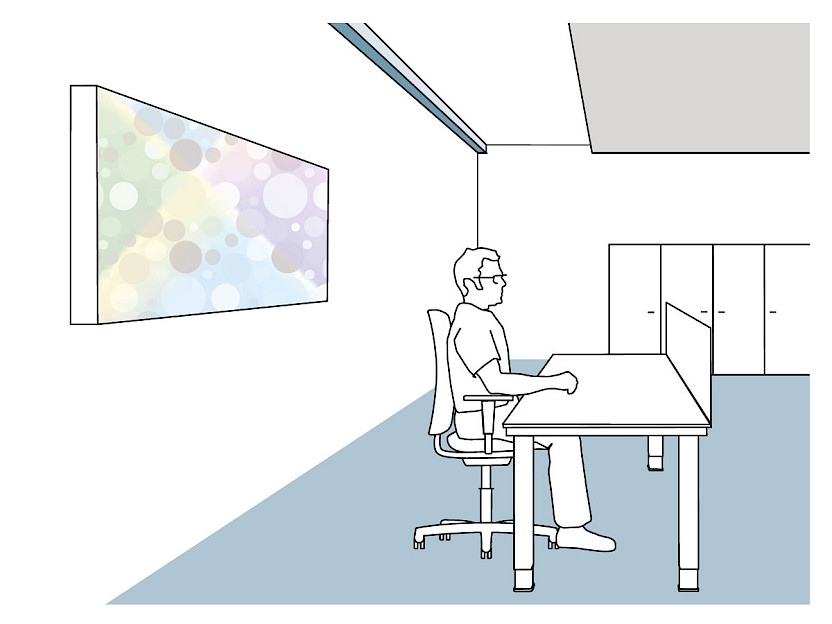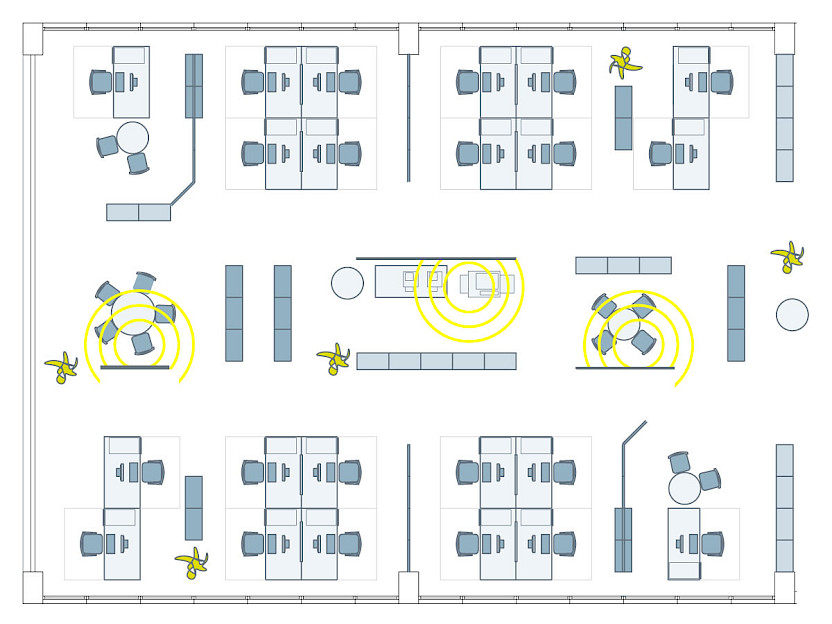Even relatively low noise levels promote stress and impair performance capacity, as psychologists at Cornell University in Ithaca have found. Gary Evans, Professor of Environmental Psychology, concluded in his studies that employees in noisy offices were 40% less likely to attempt solving technical or specialist problems. Compared with people in quieter environments, they also made only half as many ergonomic adjustments to their furniture or computer.
Scope and Causes of the Problem
A reader survey conducted in 2024 by the blog for modern office work, OFFICE ROXX, revealed the following: more than one in three (38%) feel heavily disturbed by noise in the office. 47% reported being moderately disturbed, and only 15% said that noise in the office was not an issue for them. Compared with previous years, the proportion of those who feel heavily disturbed has increased: in 2023 it was 32%, and in 2021, 31%.
The most frequent causes of noise disturbance are colleagues’ conversations and ringing telephones. The problem: both types of noise are impulsive and information-rich. There is no chance of tuning them out – the human ear is always on reception. This is why room acoustic measures are needed to effectively reduce noise. Modern telephony and video conferencing technology, as well as good spatial planning, are further approaches to reducing stress and maintaining employees’ performance capacity.
Measures



ROOM ACOUSTIC MEASURES
A combination of sound-absorbing and sound-shielding measures is usually most effective. Sound absorption reduces noise, while sound shielding interrupts its direct transmission – at least partially.
Thanks to their large surfaces, ceilings (acoustic ceilings, baffles) and walls (wall panels, acoustically effective pictures) are particularly suitable for sound-absorbing measures. Transparent acoustic films can be mounted in front of large glass surfaces. Carpets also work well in the higher frequency ranges of sound. Many items of furniture likewise have a good sound-absorbing effect.
For sound shielding, cupboards, partition walls or desk-mounted screens can be used. These are particularly effective when fitted with absorbing surfaces and positioned as close as possible to the noise source – e.g. at a workplace with frequent phone calls, or at a meeting island.
Further information can be found under Room Acoustics or in IBA Technical Paper No. 8 Room Acoustics.
SPACE PLANNING
Room acoustic optimisation begins with spatial planning. As part of a task and communication analysis, it is first determined which employees need physically separate workstations. Reasons for this may include tasks requiring high concentration or a high level of confidentiality. Legal reasons, for example in the case of works council offices, may also require a separate workspace.
For all other employees, ideally:
- workstations should be arranged so that people who communicate frequently sit as close together as possible;
- meeting and communication zones should be placed as far away from workstations as possible;
- workstation groups and meeting zones should be well shielded;
- workstations should not be placed too close to one another.
COMMUNICATION TECHNOLOGY
Disruptions caused by telephone calls can be reduced through the use of technology. Using headsets makes it possible to communicate clearly even at lower speaking volumes. Optical signals can serve as an alternative to ringing telephones.
Longer video calls should in any case be relocated to separate rooms.
Information on the effects of noise can be found in IBA Technical Paper No. 11 Sound and Noise Impact.
REGULATIONS
- The Technical Rule ASR A3.7 Noise specifies the requirements of the German Workplace Ordinance (ArbStättV) on noise and acoustic measures in offices.
Download of the German document at www.baua.de - A compilation of relevant standards can be found here >
PLANNING TOOLS
- To ensure a smooth transition between interior design and room acoustic planning, the acoustic plug-in for pCon.planner was developed. Further information can be found here >




